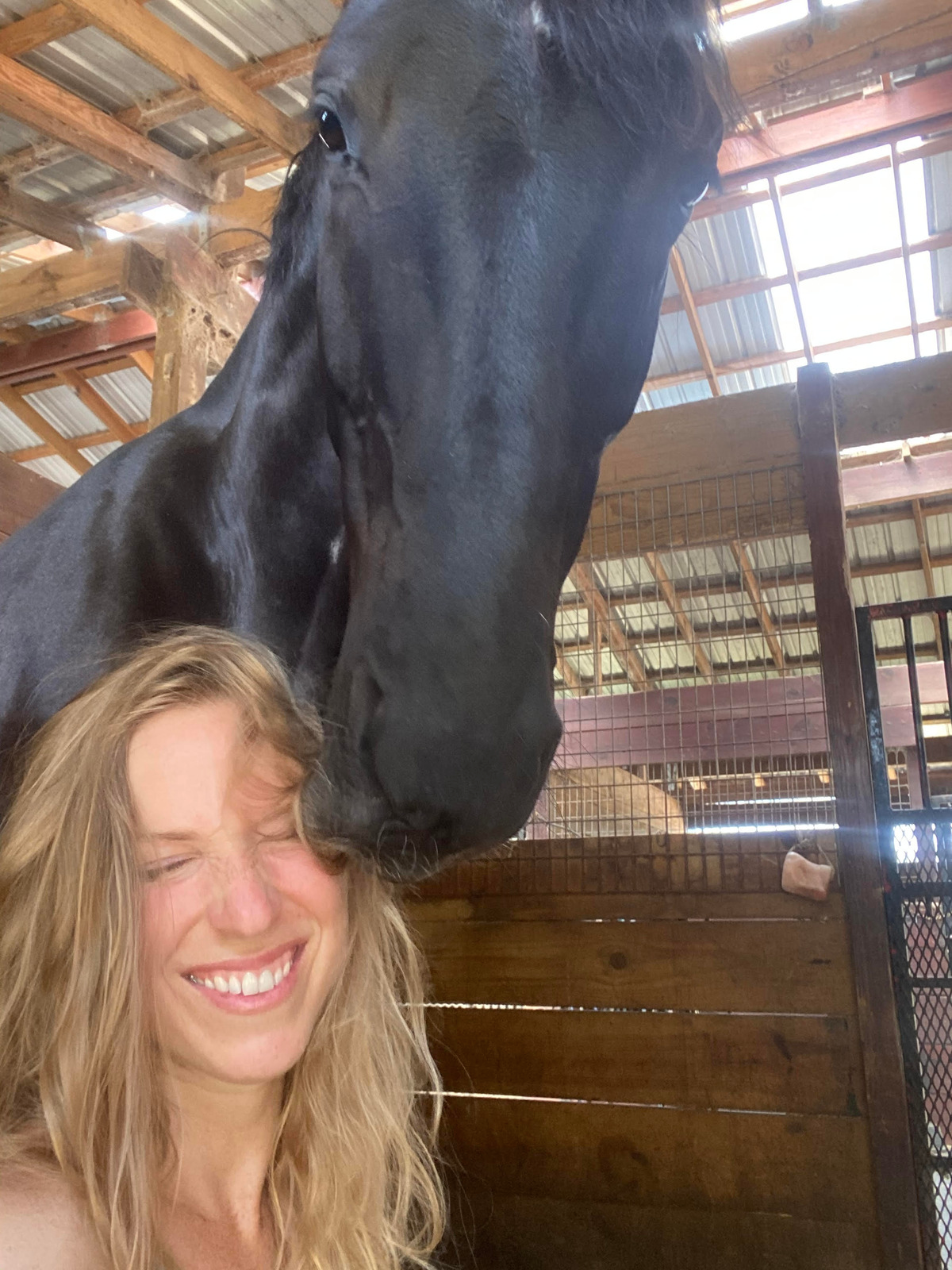I’m new to the Bay Area, but so far winters in Livermore are quite nice! The nights cool down to the 30’s but the days typically warm up to the mid 60’s with a soft breeze picking up towards afternoon. With such beautiful weather, I can’t help but want to go explore outside during my days off. Yesterday, I hiked out the back gate at the barn to the top of the biggest hill around and got a great view of the rolling hills landscape expansive to my north, and the suburbs of Livermore, Pleasanton, and San Ramon in the valley to the south and west. I continued along the ridge line until I found a thin cow path down the hill to the other side, where I wandered through a wash, still damp from rain a few weeks ago. I was hoping to spy a coyote den but all I found were the omnipresent ground squirrels and their widespread network of burrows.
I love hiking and jogging, and enjoy supplementing my active job with activities that improve my cardiovascular fitness. Often times I get questions from students or their parents on recommended activities to improve their ability to function successfully in the saddle. Indeed, there are several exercises you can do that will enhance fitness specifically for horse back riders, and I will go over some of them now. Obviously running, jogging, and hiking are great for elevating the heartbeat and conditioning the heart and lungs to maintain steady breath while riding. I highly encourage any rider to incorporate either a daily walk or jog/run into their routine, even if its only 1 mile per day. Consistency is more important than duration especially in the beginning, the goal is to create the habit which will hopefully lead to increased pace and mileage as muscles become accustomed to the workout.
Lower body strength is key when in the saddle, as you depend on your legs and balance to keep you in position. Walking lunges are great for building leg muscle and developing the body control needed when riding. To do these, stand with your legs hip width apart and take a step forward with the right leg. Bend the knees until you have achieved 90 degree angles with both, maintaining a straight line from the knee to ankle. Do not allow the back knee to touch the floor, and rise taking a step forward with the left leg. Immediately lower into the lounge, bending both knees to 90 degrees again before rising and taking another step. Alternate steps as you move across the floor, and shoot for 3 sets of 8-12 reps. Controlling the placement of each leg during the lounges increases body awareness and leads to a more supple and accurate leg in the saddle. This exercise predominantly works quads, hamstrings, and calves.
An area that rider’s often overlook is their core, which can be addressed by incorporating several sets of mountain climbers into your workout regimen. Start in downward dog and lower your buttocks and back into a plank position. From here, lift your right leg and bring it to the outside of your right elbow. Replace your right leg in full body plank and then lift your left leg and bring it to the outside of your left elbow. Gradually increase the speed in which you bring each leg to its associated elbow, the goal is to do this quickly or at least at a walking pace. An alternative method to highlight the oblique abdominal muscles is to bring each knee to the inside of the opposite elbow, crossing your knee/leg under your belly. In both exercises it is important to maintain a straight back without lifting your rear in order to receive the full benefits of the workout. This exercise focuses on the trapezius and bicep muscle groups as well as the abdominal region. Three sets of 8-12 sets should leave you with a satisfying burn.
Another great exercise that tones both the lower body and the core are single leg dead lifts. For this practice stand with both feet together and arms raised above your head with palms pressed against each other. Take a large step forward with the right leg landing heel first, and slowly tilt your upper body and arms forward as you raise your left leg in line with your outstretched arms. Continue stretching forward with your arms as you attempt to raise both your left leg and palms higher while maintaining straightness. The right leg should be straight and pillar like throughout the duration of the hold. Once your ready to come up again, slowly lift your arms and bring your left leg simultaneously to the ground behind you where you had it originally. Replace your right leg next to the left leg, and with your arms lifted take a large step with your left leg forward landing heel first and repeat the exercise with the opposite leg. Three sets of 8-12 reps will build strength while improving balance, critical for any equestrian.
There are many ways to help inspire a workout. Whether that means you join a gym, hire a fitness coach, start a jogging routine, or follow along to exercise videos at home, there is an option that can fit into your lifestyle. Personally, I prefer incorporating regular jogs and hikes into my week in addition to maintaining a yoga practice either in a studio or at home. As important as good exercise is, mobility and flexibility are equally necessary components to a healthy and well-rounded fitness routine. If you work out but don’t stretch before and after, you could be setting yourself up for a preventable injury. Yoga is a great way to stave off fitness related injuries as its holistic methods improve strength while also increasing flexibility. I hope that this post helped guide you through some good work outs targeting equestrian athletes, and motivated you to step up your fitness routine!





Leave a Comment